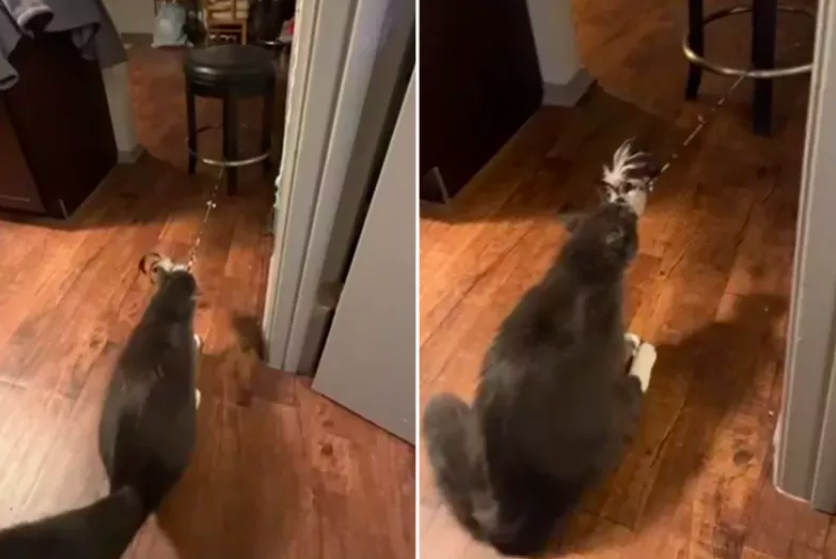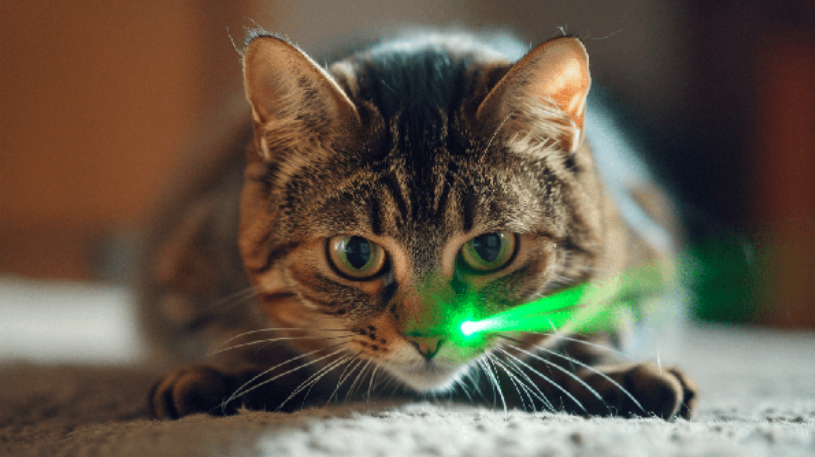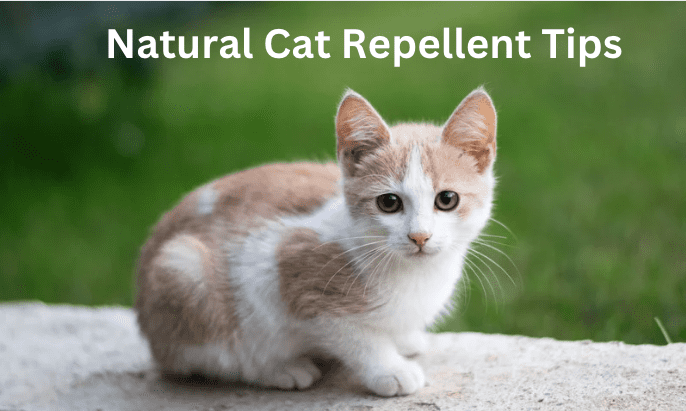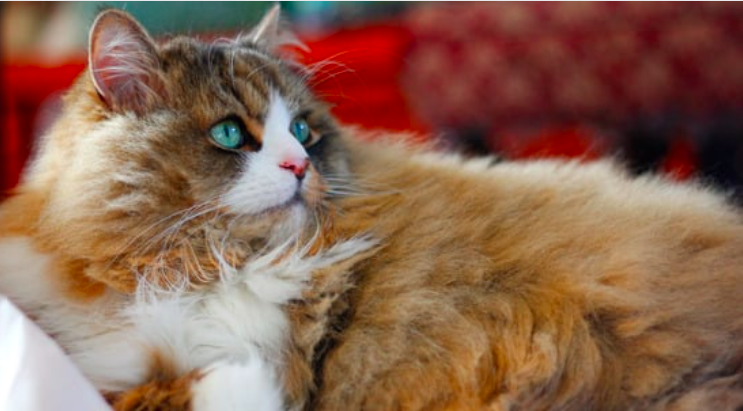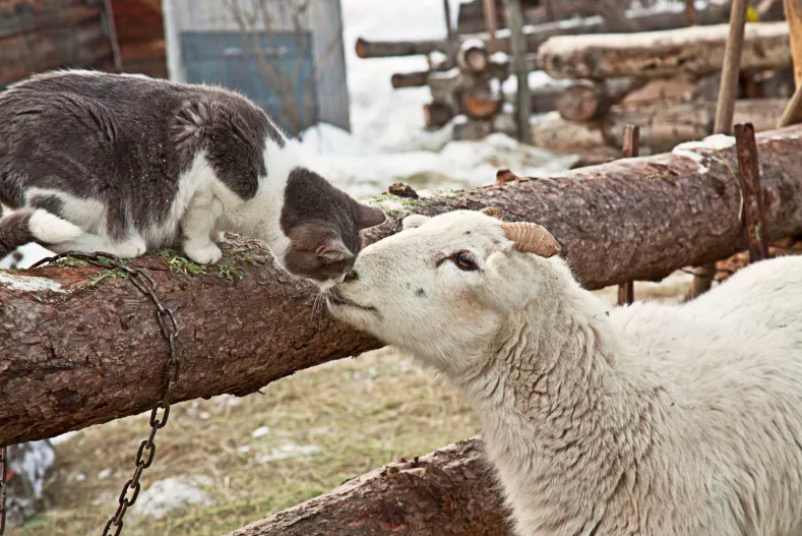Cats
All About Ginger Cats: What You Need to Know About Ginger Cats – Check Out!

All About Ginger Cats: What You Need to Know About Ginger Cats – Check Out!
Even though they are not a breed, Ginger cats are distinguished by their distinctive coloration, ranging from orange to red to gold in various shades.
Due to their tiger-like appearance and friendly personalities, ginger cats are among the most popular cats in the world today.
As a matter of fact, ginger cats have their holiday – Ginger Cat Appreciation Day is celebrated annually on the first of September.
The ginger cat is not only popular among pet owners, but it is also the breed of preference for some of the world’s most popular and famous cats.
Consider characters such as Orangey, the cat from Breakfast at Tiffany’s, Puss in Boots from Shrek, or Garfield, the quintessential tiger cat.
The Characteristics that Make Ginger Cats So Special
In part due to the fact that ginger cats are not a distinct breed, they are making broad generalizations about their personalities and temperaments difficult.

After all, is said and done, all ginger cats have one important characteristic in common, aside from their orange coloring: they are all tabbies.
It is a coat pattern that includes a combination of stripes, swirls, and colored spots that is referred to as “tabby.” This pattern is found in both wild and domestic felines, and it is thought to be inherited.
As a matter of fact, all domestic cats carry the tabby gene, even though they may not always display an obvious tabby pattern on their coat.
Every ginger cat is an individual, but because they all carry the tabby gene, they share some characteristics in common with one another as well.
For example, all tabbies have an M-shaped marking on their foreheads that distinguishes them from other tabbies. All of the other aspects of their patterning are determined by genetics.
The appearance of the Ginger Cat
The regal tiger himself is the most famous example of a wild ginger cat in the wild. Tigers are a perfect example of the tabby pattern in action, though there are a variety of variations.
The tabby pattern is common among big cats, especially including the nearest genetic ancestors of the domestic or house cat – African, European, and Asian wildcats – and is especially prevalent among African, European, and Asian domestic cats.
A great variety of domestic cat breeds, including the American Shorthair, Persian, Abyssinian, Maine Coon, and American Bobtail, can be distinguished by their tabby patterning.
There are five different variations of the tabby pattern that can be found in ginger cats:
- Patched Tabby
- Mackerel Tabby
- Spotted Tabby
- Ticked Tabby
- Classic Tabby
The classic tabby, which is covered in a swirling pattern of varying shades of orange, is one of the most recognizable ginger cats. A bulls-eye-like pattern appears on the sides of these cats’ bodies, giving them the appearance of a marble cake compared to other cats.
This pattern can be seen frequently in the American Shorthair. The mackerel tabby is also referred to as the tiger cat because of a series of narrow stripes that run down its sides and across its chest.
Because the stripes branch out from a band of color that runs along the cat’s spine, this tabby appears to be shaped like a fish skeleton, where the name “mackerel” tabby comes from.
In contrast to most tabby colorations, which consist of stripes, the spotted tabby is covered in spots of varying sizes and shapes. This pattern could be seen clearly in the American Bobtail and Ocicat breeds, among other things.
Ticked orange tabbies are distinct in a different way from other tabbies. They don’t usually have visible stripes or spots on their bodies, except for a few faint ones on their tail and legs now and then.
Instead, the coats of these cats are made up of agouti hairs that have bands of pigmentation running through them. Cat breeds such as the Somali and Abyssinian are excellent examples of the ticked tabby color pattern.
Finally, the patched tabby is also referred to as the bi-color tabby because these ginger cats have areas of tabby pattern and areas of solid color or another pattern on their bodies.
Ginger Cats Have Intriguing Genetics
Male cats have one Y chromosome and one X chromosome, respectively, whereas female cats have two X chromosomes and one Y chromosome. The gene that causes ginger coloration is found on the X chromosome of the human chromosome.

If you look at the coat color of cats, they inherit a combination of genes from both of their parents. To most people’s amazement, the wide range of colors you see in cats is derived from only two primary colors: red and black (or orange).
Kittens acquire two copies of each gene from their parents, which can be either dominant or recessive depending on their parents’ genetic makeup.
The ginger gene “O” is dominant, meaning a kitten only needs to inherit one copy of the ginger gene to have some degree of ginger coloration.
The number of copies of the “O” gene that a kitten inherits determines whether or not the kitten will develop full or partial ginger coloration.
Male kittens only need to inherit the dominant “O” ginger gene from their mother to be fully orange, whereas female kittens must inherit the gene from both their mother and father to be fully orange.
Calico or tortoiseshell are the most common colors for male kittens who inherit the recessive “o” gene from their mother, while ginger and calico are the most common colors for female kittens who inherit the recessive “o” gene.
Given the fact that females inherit two X chromosomes, the number of genetic combinations that can occur is significantly greater.
As a result, female ginger cats account for only about 20% of the population. On the other hand, Ginger cats are predominantly male, with approximately 80% being male.
The Cat’s Temperament and Personality
Because ginger coloration can be found in a variety of cat breeds, it is difficult to make broad generalizations about the Personality and temperament of a ginger kitten. On the other hand, Ginger cats have a reputation for being friendly and easy-going creatures.
In fact, according to the results of a survey conducted by the University of California, Berkeley, cat lovers were more likely to attribute positive personality traits to orange cats than white or tortoiseshell cats.
Ginger cats were generally considered more friendly, whereas tortoiseshell and white cats were considered more aloof.
The way you raise your ginger kitten impacts how he develops his Personality, but the breed makeup of the kitten is also a significant determinant of his Personality.
Here’s a quick rundown of a few of the most distinctive cat breeds that are known for their ginger coloring:
- Abyssinian
- American Bobtail
- American Curl
- Bengal
- British Shorthair
- Egyptian Mau
- Maine Coon
- Munchkin
- Ocicat
- Oriental Shorthair
- Persian
- Somali
If you’re interested in learning more about the genetic makeup of your ginger cat’s breed, the Basepaws Cat DNA Kit might be just what you’re looking for.
A saliva sample is required to perform this service, which compares your cat’s DNA against the largest cat DNA database in the world.
You’ll gain valuable insight into your cat’s breed makeup, wild ancestry, and important health markers, which will assist you in keeping your cat healthy in the long run.
7 Well-Known Ginger Cats
1). Orlando – Orlando, also known as the Marmalade Cat, is the adorable orange star of a series of illustrated children’s books written and illustrated by Kathleen Hale, which were first published in 1938.
The adventures of Orlando and his cat’s family are chronicled in this 19-book series, which was inspired by Hale’s ginger cat, Orland.
It was an instant hit when the first book in the series, Orlando (The Marmalade Cat): A Camping Holiday, was published in 1971, and the series came to an end with Orlando and the Water Cats in 1972.
2). Orangey (pronounced “orangey”) – Orangey (also known as Orangey Minerva) was the ginger cat who appeared in the 1961 film, called ”Breakfast at Tiffany’s with Audrey Hepburn”. He was a marmalade tabby cat with a ginger coat.
Citrus orange cat Orangey made his film debut in the 1952 film Rhubarb, and he went on to become the first and only cat to win two PATSY awards (Picture Animal Top Star of the Year): in 1952 and 1962.
Orangey was frequently referred to as “mean” despite his celebrity.
3). Orion – In the 1997 film Men in Black, starring Will Smith and Tommy Lee Jones, this bi-color ginger and white feline wore a galaxy cluster around his neck, inspired by Orion’s constellation.
Gentle Rosenburg, part of the Arquilian royal family who was hiding on Earth, was the owner of Orion, which belonged to him.
4). Jonesy – In the 1979 film Alien, Ellen Ripley kept a ginger tomcat named Jones aboard the USCSS Nostromo, given the nickname Jonesy.
Jones and Ripley were the only two people to survive the Nostromo’s encounter with a Xenomorph, ultimately resulting in the ship’s decommissioning and destruction.
5). Garfield – In addition to being known for his laziness and his fondness for lasagna, Garfield is a comic strip character created by Jim Davis in the United States.
Garfield is a ginger cat with tiger stripes who lives with his owner, Jon Arbuckle, and spends his days terrorizing his canine family member, Odie, who he considers his best friend.
6). Puss in Boots – After making his debut in Shrek 2 in 2004, Puss in Boots quickly rose to the status of a main character in the Shrek film franchise.
This sassy ginger cat is dressed in boots, a cape, and a floppy hat, and he wears his sword around his waist, which he keeps in a belt.
7). Milo – The Adventures of Milo and Otis is a 1986 Japanese adventure comedy film which was about two animal friends – a ginger tabby cat named Milo and his best friend, a pug named Otis – who become best friends through their mutual love of animals.
When Columbia Pictures released an English-language version of the film in 1989, they cut out 15 minutes from the original French-language version.
11 Interesting Facts About Ginger Cats
Because of their orange coloring and striped pattern, ginger cats are sometimes referred to as tiger cats. Marmalade cats are another name for these cats.
1). The ginger cat is not a distinct breed but rather a coloration of the domestic cat. Despite their bright orange coats, all ginger cats have some sort of pattern on them; they are never completely orange.
2). Pheomelanin, a specific pigment found in ginger cats, is responsible for the cat’s orange color. This is the same color pigment responsible for the red hair on humans’ heads.
3). All ginger cats are tabbies, regardless of their coat color. In both wild and domestic felines, the tabby pattern is one of the most common. It is distinguished by an M-shaped marking on the forehead.
4). Ginger cats can have either long or short hair, depending on their breed.
5). Certain breeds of dogs are more likely than others to have ginger fur. The Bengal, Abyssinian, Egyptian Mau, Munchkin, and Persian are just a few popular ginger cat breeds today.
6). The color of the kitten does not determine the lifespan of an orange kitten. They have the same average lifespan as the feline breed to which they belong, approximately 15 years.
7). Compared to other patterns, such as the tortoiseshell cat, orange cats have a reputation for being friendly and affectionate. On the other hand, individual temperament is largely determined by the cat’s breed.
8). Male ginger cats account for approximately 80% of the population. Female ginger cats are less common than male ginger cats because they must acquire two copies of the ginger gene from both parents to have the orange coloring.
9). While most ginger cats are solid orange with tabby markings, you may occasionally come across bi-colour ginger cats that are typically orange and white.
10. Many ginger cats develop black freckles on their faces due to their diet. The lips, nose, and gums are the most common areas where they appear.
11. Ginger tabbies are popular characters in film and television. Some of the most well-known ginger cats include Garfield, the comic strip cat, Milo from Milo and Otis, and Orangey from the film Breakfast at Tiffany’s, to name a few.
Do you have a ginger cat of your own? Tell us everything you know about them in the comments section below!
Questions People Also Ask:
Is it really true that all ginger cats are male?
Cats of both sexes can exhibit ginger coloration, so it is not a gender issue. Having said that, male cats only need to inherit one copy of the ginger gene, whereas female cats require two copies. Male kittens with ginger tabby coloration are three times more likely than female kittens to have this coloring.
Are ginger cats a good fit for your home?
Because ginger cats are not a specific breed, it isn’t easy to make broad generalizations about them. However, some research suggests that ginger cats are perceived as being friendlier than other colorations, such as tortoiseshell. Every cat has its distinct personality.
Do ginger cats make good pets? Do ginger cats make good pets?
Many cat owners describe their ginger cats as friendly and affectionate, which is not surprising given their popularity. On the other hand, individual personality and temperament can vary, and your cat’s breed makeup may impact their personality.
What is the lifespan of a ginger cat?
The average life span of an indoor ginger cat is 10-16 years, depending on the breed. The average life span of an outdoor Ginger cat is 7-11 years, depending on the environment.
What is the deficiency of female ginger cats?
Ginger cats are predominantly male, with only about 20% being female.
What is it about ginger cats that makes them the best?
This is because they are 100 percent awesome.
Can you tell me what color the ginger cat’s eyes are?
Ginger cats have a wide range of beautiful eye colors, including blue, green, yellow, and brown, to choose from.
We appreciate you for taking the time to read!
Finally, we hope you found this article interesting? And what do you think about ”All About Ginger Cats: What You Need to Know About Ginger Cats – Check Out!?”
Please you should feel free to share your thoughts with us in the box below.
And let us know if you observe something that isn’t quite right.
Cats
Clever Cats: Breeds That Learn Fast
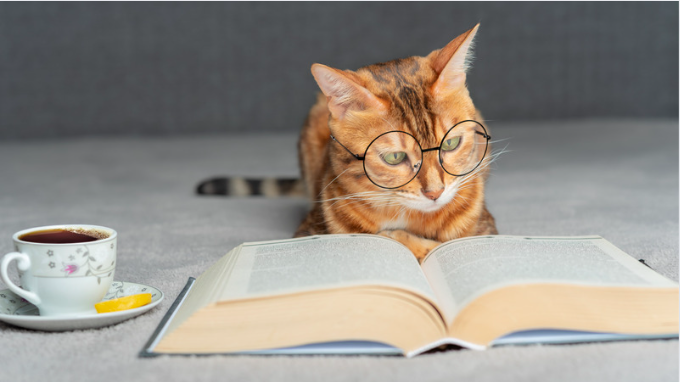
Clever Cats: Breeds That Learn Fast
Cats have always fascinated us with their agility, independence, and sometimes enigmatic behavior. Among the vast array of feline breeds, some stand out for their remarkable intelligence and ability to learn quickly.
In this article, we will delve into the world of these exceptional cat breeds, exploring their unique characteristics, training capabilities, and what makes them such quick learners.
Whether you’re a seasoned cat owner or considering adopting a new feline friend, this comprehensive guide will help you understand the breeds that are not only intelligent but also a joy to train.
Why Intelligence Matters in Cats
Understanding Feline Intelligence
Feline intelligence is a multi-faceted trait that encompasses problem-solving abilities, social learning, and adaptability. Unlike dogs, cats often showcase their intelligence in more subtle ways, such as manipulating objects to get what they want or learning routines and commands.
Benefits of Owning Intelligent Cats
Owning an intelligent cat comes with several benefits. These cats are more interactive and engaging, making them excellent companions. They can learn tricks, follow commands, and even understand basic household rules, which makes living with them more enjoyable and less challenging.
Top Cat Breeds Known for Their Intelligence
Abyssinian
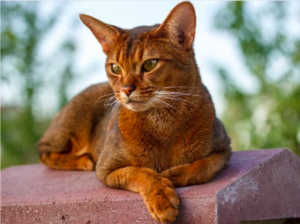
Overview
The Abyssinian is often hailed as one of the smartest cat breeds. Known for their curiosity and playful nature, Abyssinians are quick learners who thrive on mental stimulation.
Training and Activities
Abyssinians are highly trainable and enjoy interactive toys and puzzle feeders. They can learn tricks such as fetching and even walking on a leash. Their love for heights means they appreciate cat trees and climbing structures.
Siamese
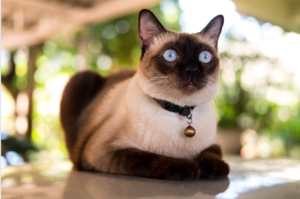
Overview
Siamese cats are not only intelligent but also highly vocal and sociable. They form strong bonds with their owners and are always eager to engage in activities.
Training and Activities
Siamese cats are quick to learn tricks and commands. They enjoy interactive play and can be trained to perform simple tasks like opening doors or retrieving items. Their vocal nature also makes them responsive to verbal cues.
Bengal
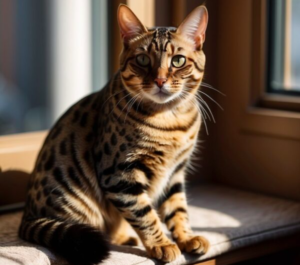
Overview
Bengals are known for their striking appearance and high energy levels. Their intelligence is reflected in their ability to solve problems and learn complex tasks.
Training and Activities
Bengals enjoy activities that challenge their minds, such as agility courses and puzzle toys. They can be trained to walk on a leash and perform tricks. Providing them with interactive playtime helps in channeling their energy positively.
Burmese
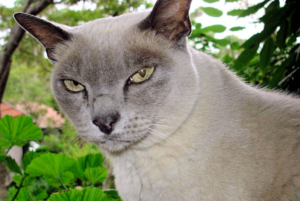
Overview
Burmese cats are affectionate, people-oriented, and intelligent. They enjoy being involved in family activities and can be trained to follow various commands.
Training and Activities
Burmese cats are quick learners and respond well to positive reinforcement. They enjoy learning tricks, playing fetch, and interactive games that stimulate their minds.
Scottish Fold
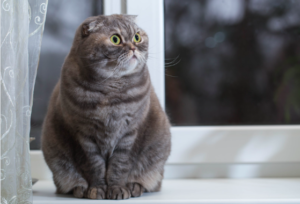
Overview
Scottish Folds are known for their distinctive folded ears and sweet demeanor. Despite their calm appearance, they are intelligent and can learn quickly.
Training and Activities
Scottish Folds enjoy interactive toys and games. They can learn tricks and commands and appreciate routines that keep their minds engaged.
Training Tips for Intelligent Cats
Start Early
Begin training your cat as early as possible. Kittens are more receptive to learning new behaviors and routines.
Use Positive Reinforcement
Reward your cat with treats, praise, or playtime whenever they successfully perform a desired behavior. Positive reinforcement strengthens the association between the action and the reward.
Keep Sessions Short and Fun
Cats have shorter attention spans than dogs, so keep training sessions brief and enjoyable. Incorporate playtime to make learning fun for your cat.
Be Patient and Consistent
Patience and consistency are key when training cats. Repeat commands and routines regularly, and avoid punishing your cat for mistakes. Consistency helps reinforce learning and builds trust.
Challenges of Training Intelligent Cats
Independence and Stubbornness
Intelligent cats can sometimes be independent and stubborn. They might choose to ignore commands if they are not in the mood, so it’s important to understand their behavior and work with it.
Need for Mental Stimulation
Highly intelligent cats require constant mental stimulation. Boredom can lead to behavioral issues, so ensure they have plenty of toys, activities, and interaction to keep their minds engaged.
Managing High Energy Levels
Breeds like Bengals have high energy levels that need to be managed. Providing them with enough physical and mental exercise is crucial to prevent destructive behavior.
Living with Intelligent Cats
Creating an Enriched Environment
An enriched environment is essential for intelligent cats. This includes a variety of toys, climbing structures, scratching posts, and interactive feeders to keep them stimulated.
Social Interaction
Intelligent cats thrive on social interaction. Spend quality time playing, training, and simply bonding with your cat to ensure they feel valued and engaged.
Understanding Their Needs
Each intelligent breed has its own unique needs and preferences. Understanding these and catering to them will help you build a strong and positive relationship with your cat.
Conclusion
Owning an intelligent cat can be an incredibly rewarding experience. These quick learners bring joy, challenge, and companionship to their owners. By understanding their unique characteristics and providing the right environment and training, you can foster a deep and fulfilling relationship with your feline friend.
Whether you choose an Abyssinian, Siamese, Bengal, Burmese, or Scottish Fold, you’re sure to enjoy the remarkable intelligence and personality they bring into your home.
Frequently Asked Questions (FAQs)
What makes a cat breed intelligent?
Intelligent cat breeds often show high levels of problem-solving abilities, adaptability, and social learning. They can quickly learn commands, tricks, and routines.
Can all cats be trained?
While some breeds are more receptive to training than others, all cats can be trained to some extent. Patience, consistency, and positive reinforcement are key to successful training.
What are the best toys for intelligent cats?
Interactive toys, puzzle feeders, and climbing structures are ideal for intelligent cats. These toys provide mental stimulation and keep them engaged.
How do I keep my intelligent cat from getting bored?
Provide a variety of toys, engage in regular playtime, and introduce new activities regularly. Rotating toys and creating an enriched environment also help prevent boredom.
Are intelligent cats more difficult to care for?
Intelligent cats can be more demanding in terms of mental stimulation and interaction. However, with the right approach and environment, they can be delightful companions.
We appreciate you for taking the time to read this article!
Finally, we hope you found this article interesting? And what do you think about ”Clever Cats: Breeds That Learn Fast!?”
Please feel free to share or inform your friends about this article and this site, thanks!
And let us know if you observe something that isn’t quite right.
Cats
The Enchanting Scottish Fold: A Guide to the Adorable Feline with Folded Ears
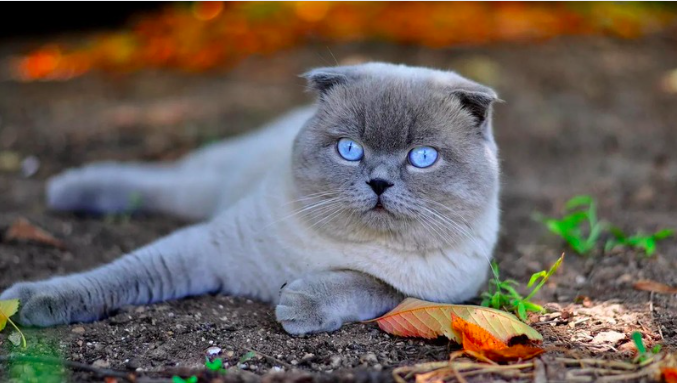
The Enchanting Scottish Fold: A Guide to the Adorable Feline with Folded Ears
Welcome to the world of the Scottish Fold cat, where charm and curiosity meet in an irresistibly adorable package. With their distinctive folded ears and sweet expression, Scottish Folds have captured the hearts of cat lovers around the world. Originally hailing from Scotland, these cats are known for their gentle demeanor, playful nature, and loving personality.
In this comprehensive guide, we will delve into the fascinating world of Scottish Fold cats, exploring their history, physical characteristics, personality traits, and care requirements. Whether you’re a seasoned cat owner or considering adding a feline friend to your family, the Scottish Fold’s unique charm and affectionate nature make them a delightful addition to any home. Join us as we unravel the enchanting tale of the Scottish Fold cat and discover why they are such beloved companions.
Fold
Overview
The Scottish Fold cat is a charming and distinctive breed known for its unique folded ears and sweet expression. Originating from Scotland in the 1960s, these cats have captured the hearts of many with their endearing appearance and affectionate nature. Scottish Folds are known for their gentle and loving temperament, making them wonderful companions for families and individuals alike.
History and Origins
The Scottish Fold breed traces its roots back to a white barn cat named Susie, who was found in Scotland in the early 1960s. Susie had a unique genetic mutation that caused her ears to fold forward, giving her an owl-like appearance. This trait was passed down to her kittens, and thus, the Scottish Fold breed was born. The breed quickly gained popularity for its distinctive look and friendly demeanor, and it was officially recognized by cat registries in the 1970s.
Physical Characteristics
- Folded Ears: The most distinctive feature of the Scottish Fold is its folded ears, which give the cat a sweet and owl-like appearance. Not all Scottish Folds have folded ears; some may have straight ears, known as “straights,” which are also common in the breed.
- Coat and Colors: Scottish Folds can have either a short or long coat, both of which are dense and plush. They come in a variety of colors and patterns, including tabby, tortoiseshell, and solid colors like white, black, and blue.
- Body Structure: Scottish Folds are medium-sized cats with a rounded appearance. They have sturdy bodies, round faces, and large, expressive eyes that give them a sweet and gentle expression.
Personality and Behavior
Scottish Folds are known for their calm and laid-back demeanor. They are affectionate cats that enjoy being around people and are often described as “lap cats” due to their love of cuddling. They are also known for their playful nature and enjoy interactive toys and games. Scottish Folds are generally good with children and other pets, making them a great choice for families.

Health and Care
- Ear Care: Due to their folded ears, Scottish Folds may be prone to ear infections. It’s important to regularly check and clean their ears to prevent issues.
- Grooming: Scottish Folds have dense coats that require regular grooming to prevent matting and tangling. Weekly brushing is usually sufficient to keep their coat in good condition.
- Health Concerns: Scottish Folds are generally healthy, but they may be prone to certain genetic conditions, including a skeletal disorder known as osteochondrodysplasia. Responsible breeding practices can help minimize the risk of these health issues.
Training and Activities
Scottish Folds are intelligent cats that can be trained to perform tricks and commands. They enjoy interactive play and benefit from toys that stimulate their minds and bodies. Providing them with scratching posts and other outlets for their natural behaviors can help keep them happy and healthy.
Compatibility with Families and Other Pets
Scottish Folds are known for their gentle and affectionate nature, making them great companions for families. They are good with children and other pets, including dogs, and can adapt well to different environments. Their loving and sociable nature makes them a popular choice for households looking for a friendly and affectionate pet.
Conclusion
The Scottish Fold cat is a unique and charming breed known for its folded ears and sweet expression. With their gentle demeanor and affectionate nature, Scottish Folds make wonderful companions for families and individuals alike. Whether you’re looking for a lap cat to cuddle with or a playful friend to keep you entertained, the Scottish Fold cat is sure to bring joy and companionship to your home.
FAQs about Scottish Fold Cats
Why do Scottish Folds have folded ears?
Scottish Folds have a genetic mutation that affects the cartilage in their ears, causing them to fold forward. This unique trait gives them their distinctive appearance.
Are Scottish Folds prone to ear problems due to their folded ears?
Yes, Scottish Folds may be more prone to ear infections due to the fold in their ears, which can trap dirt and moisture. Regular cleaning and monitoring of their ears can help prevent issues.
Do Scottish Folds have any health issues associated with their folded ears?
Scottish Folds may be prone to a condition called osteochondrodysplasia, which affects the development of their cartilage and bones. Responsible breeding practices can help reduce the risk of this condition.
Are Scottish Folds good with children and other pets?
Scottish Folds are known for their gentle and friendly nature, making them good companions for families with children and other pets. They enjoy socializing and being part of the family.
Do Scottish Folds require a lot of grooming?
Scottish Folds have dense coats that require regular grooming to prevent matting and tangles. Weekly brushing is recommended to keep their coat in good condition.
We appreciate you for taking the time to read this article!
Finally, we hope you found this article interesting? And what do you think about ”The Enchanting Scottish Fold: A Guide to the Adorable Feline with Folded Ears!?”
Please feel free to share or inform your friends about this article and this site, thanks!
And let us know if you observe something that isn’t quite right.
Cats
The Enchanting Burmese Cat: Affectionate, Playful, and Loyal
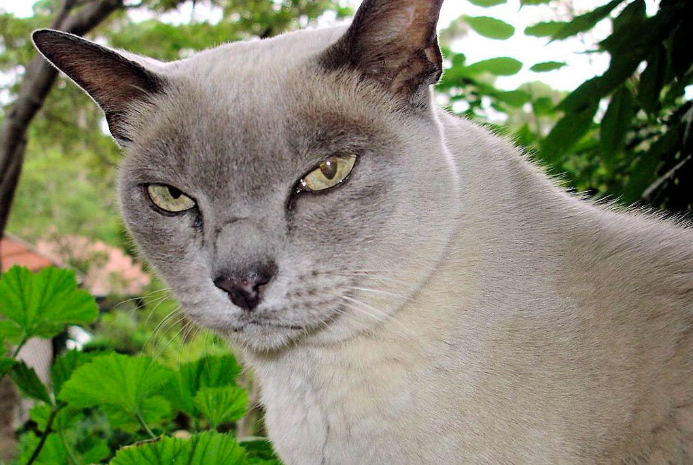
The Enchanting Burmese Cat: Affectionate, Playful, and Loyal
Enter the world of the Burmese cat, where elegance meets affection in a charming feline companion. Originating from the temples of Burma, these cats have captured the hearts of cat lovers worldwide with their striking appearance and loving nature. With their sleek coats, expressive eyes, and playful demeanor, Burmese cats are not just pets; they are cherished members of the family.
In this comprehensive guide, we delve into the captivating world of Burmese cats, exploring their history, physical characteristics, personality traits, and care requirements. Whether you’re a seasoned cat owner or considering adding a feline friend to your family, the Burmese cat’s unique blend of beauty, intelligence, and affection is sure to captivate you. Join us as we unravel the enchanting tale of the Burmese cat and discover why they are such beloved companions.
Burmese
Overview
The Burmese cat is a breed known for its striking appearance and affectionate nature. Originating from Burma (now Myanmar), these cats are renowned for their sleek, muscular bodies, expressive eyes, and silky coats. Burmese cats are often described as “people-oriented,” as they form strong bonds with their human companions and enjoy being part of the family. Their playful and curious nature makes them delightful companions for both children and adults alike.
History and Origins
The history of the Burmese cat can be traced back to ancient Burma, where they were considered sacred and kept by monks in temples. They were later brought to the West in the early 20th century and quickly gained popularity for their striking appearance and affectionate personality. The breed has since become a favorite among cat enthusiasts worldwide, known for its loving and loyal nature.
Physical Characteristics
- Coat and Colors: Burmese cats have short, sleek coats that lie close to the body. They come in a variety of colors, including sable, champagne, blue, and platinum. The coat is soft and silky to the touch, adding to the breed’s overall charm.
- Body Structure: Burmese cats are medium-sized with a muscular build. They have rounded heads, large, expressive eyes, and short, straight noses. Their compact bodies give them a sturdy appearance, and they move with grace and agility.
- Eyes and Ears: Their eyes are one of their most striking features, being large, expressive, and usually a deep, rich color that complements their coat. Their ears are medium-sized, slightly rounded at the tips, and set wide apart on the head.
Personality and Behavior
Burmese cats are known for their affectionate and sociable nature. They are often described as “dog-like” due to their tendency to follow their owners around the house and seek out human companionship. They are also highly intelligent and enjoy interactive play, making them great companions for families with children or other pets.
In addition to their affectionate nature, Burmese cats are also known for their vocalizations. They have a soft, sweet voice that they use to communicate with their owners, often engaging in “conversations” and expressing their needs and desires.

Health and Care
- Grooming: Burmese cats have short coats that require minimal grooming. Weekly brushing is usually sufficient to remove loose hair and keep their coat shiny. They also benefit from regular dental care to prevent oral health issues.
- Diet: A high-quality, balanced diet is essential for maintaining the health and vitality of Burmese cats. They should be fed a diet that is appropriate for their age, size, and activity level to ensure they receive the nutrients they need.
- Health Concerns: Burmese cats are generally healthy, but they can be prone to certain genetic conditions such as hypertrophic cardiomyopathy (HCM) and diabetes. Regular veterinary check-ups and a healthy diet can help manage these risks.
Training and Activities
Burmese cats are intelligent and can be trained to perform various tricks and commands. They enjoy interactive play and thrive on mental stimulation. Providing them with toys, puzzle feeders, and opportunities for play can help keep them entertained and prevent boredom.
Compatibility with Families and Other Pets
Burmese cats are known for their loving and social nature, making them great companions for families. They get along well with children and other pets, including dogs, as long as they are properly introduced. Their affectionate demeanor and playful nature make them a popular choice for households looking for a friendly and engaging pet.
Conclusion
The Burmese cat is a breed beloved for its affectionate nature, striking appearance, and playful personality. Whether you are looking for a loyal companion or a playful friend, the Burmese cat is sure to bring joy and warmth to your home. With their loving nature and sociable demeanor, Burmese cats make wonderful pets for families and individuals alike, enriching their lives with their presence and affection.
FAQs about Burmese Cats
What is the temperament of a Burmese cat like?
Burmese cats are known for their affectionate and social nature. They are often described as “dog-like” due to their loyalty and tendency to follow their owners around the house. They enjoy being involved in family activities and form strong bonds with their human companions.
Are Burmese cats good with children and other pets?
Yes, Burmese cats are generally good with children and other pets. They are playful and enjoy interactive play, making them great companions for families with children. They also get along well with other pets, including dogs, especially if they are introduced properly.
Do Burmese cats require a lot of grooming?
Burmese cats have short, sleek coats that require minimal grooming. Weekly brushing is usually sufficient to remove loose hair and keep their coat shiny. They also benefit from regular dental care to prevent oral health issues.
Are Burmese cats vocal?
Burmese cats are known for their soft, sweet voice, but they are not excessively vocal. They use their voice to communicate with their owners, often engaging in “conversations” and expressing their needs and desires.
What kind of environment is best for a Burmese cat?
Burmese cats thrive in environments where they have plenty of opportunities for play and interaction. They enjoy being part of the family and should have access to toys, scratching posts, and other enrichment activities. They also enjoy having access to outdoor enclosures or safe outdoor spaces where they can explore and indulge their natural instincts.
We appreciate you for taking the time to read this article!
Finally, we hope you found this article interesting? And what do you think about ”The Enchanting Burmese Cat: Affectionate, Playful, and Loyal!?”
Please feel free to share or inform your friends about this article and this site, thanks!
And let us know if you observe something that isn’t quite right.
-

 Pet Care2 years ago
Pet Care2 years agoThe Best Dog Collars For 2022
-

 Dogs2 years ago
Dogs2 years agoBichon Frise: The Happy, Playful, and Cuddly Companion
-

 Trending Pet Stories1 year ago
Trending Pet Stories1 year ago2023 ‘World’s Ugliest Dog’ Winner: Scooter’s Tale of Resilience
-

 Animals2 years ago
Animals2 years agoAre There Animals Having Down Syndrome?
-

 Pets2 years ago
Pets2 years agoThe Fascinating World Of The Red Chameleon
-

 Dogs2 years ago
Dogs2 years agoTop 10 Most Popular Dog Breeds According To AKC.
-

 Dogs2 years ago
Dogs2 years ago21 Dog Breeds That Resemble Bears Or Teddy Bears!
-

 Dogs2 years ago
Dogs2 years agoEskimo Dogs from Canada – What Are They? – Find Out!


